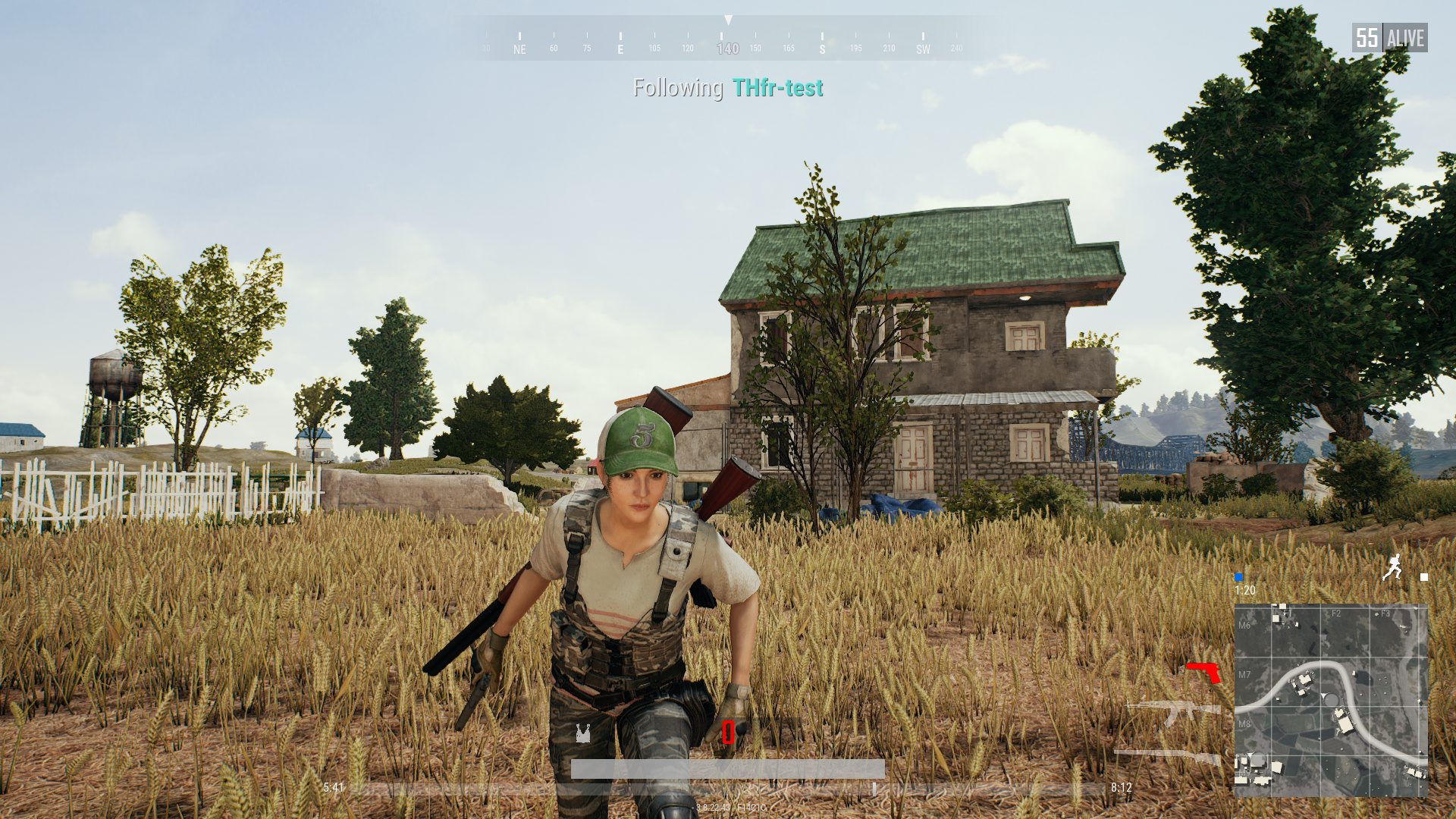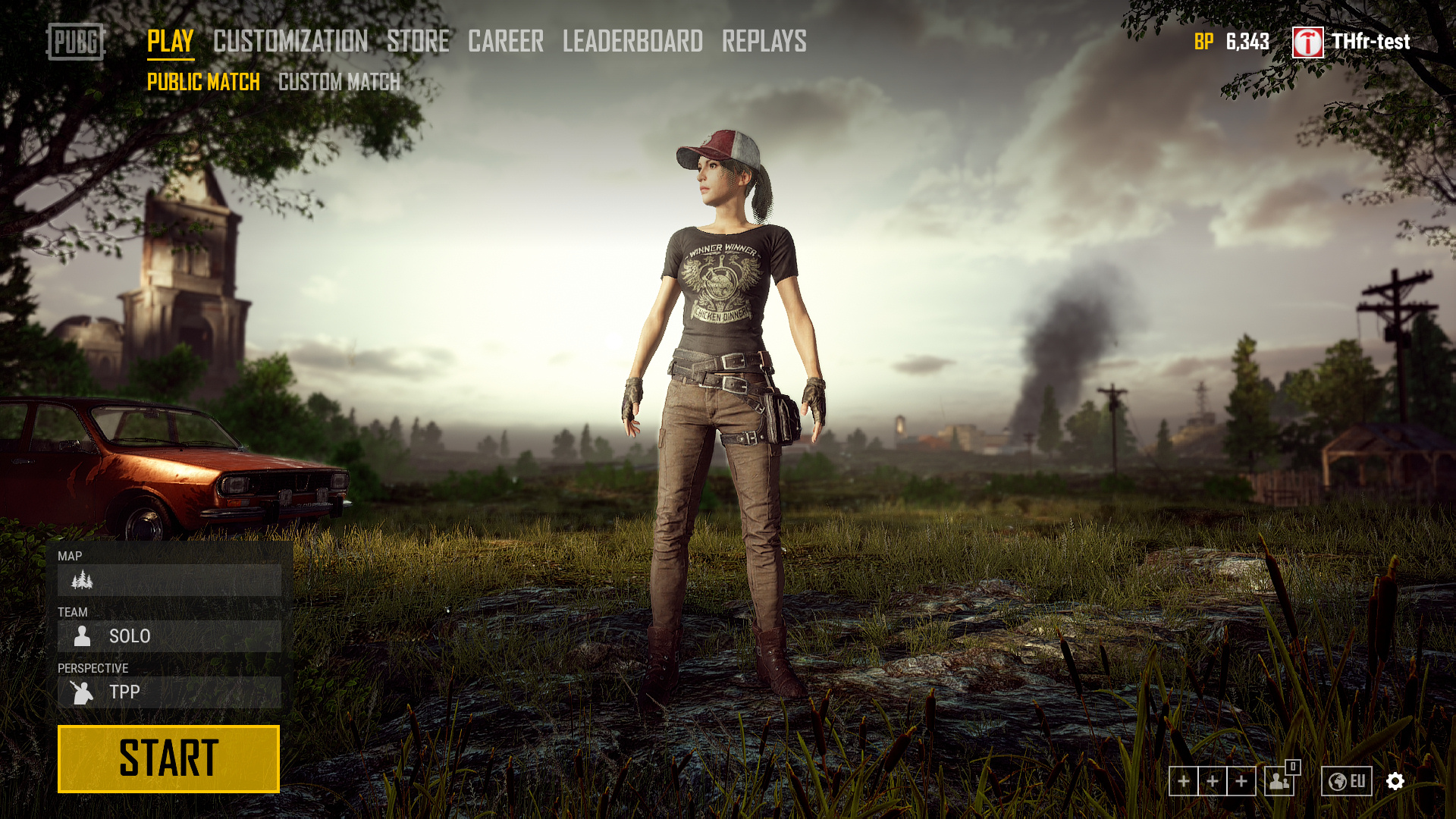The Best Possible PUBG Performance: 10 Graphics Cards Tested
Bonus: GeForce GTX 1080 Vs. Radeon RX Vega 64
The GeForce GTX 1080 and Radeon RX Vega 64 cards are much more powerful than the mainstream models we like to focus on. But everyone always wants to know how high-end hardware compares, so we dialed PUBG's detail preset back to Ultra, and tested at 1920x1080 and 2560x1440 for this last set of tests.
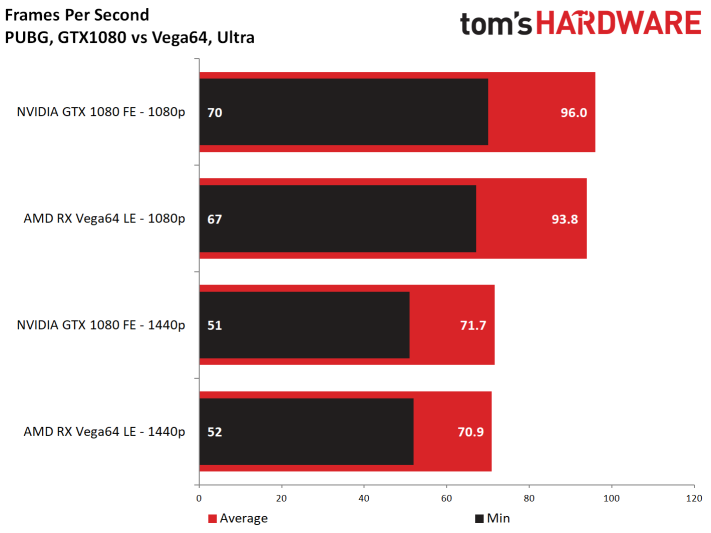
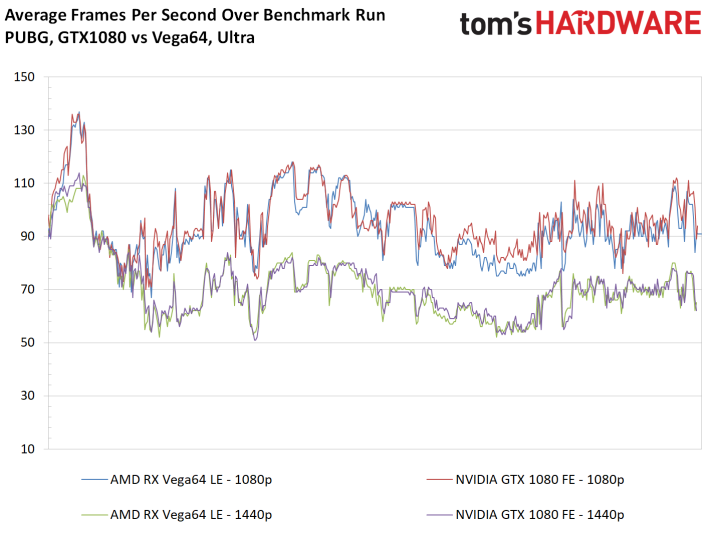
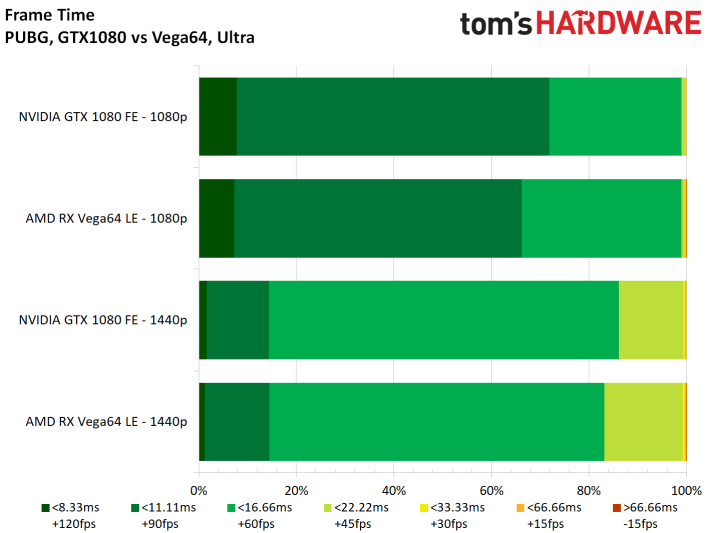
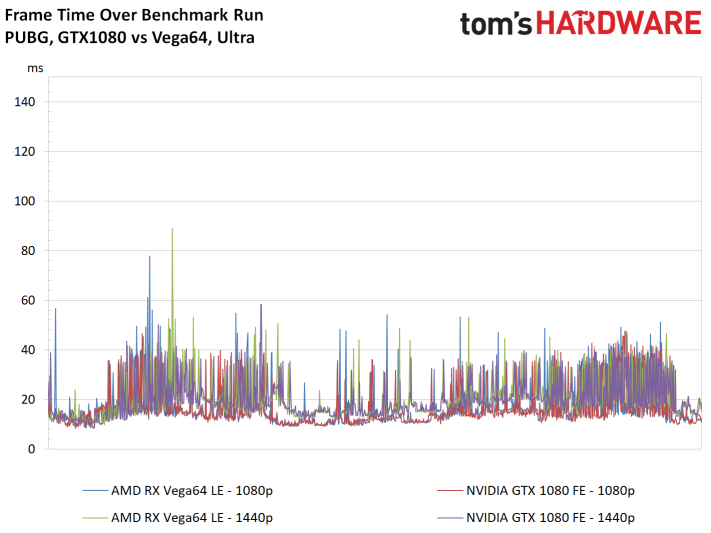
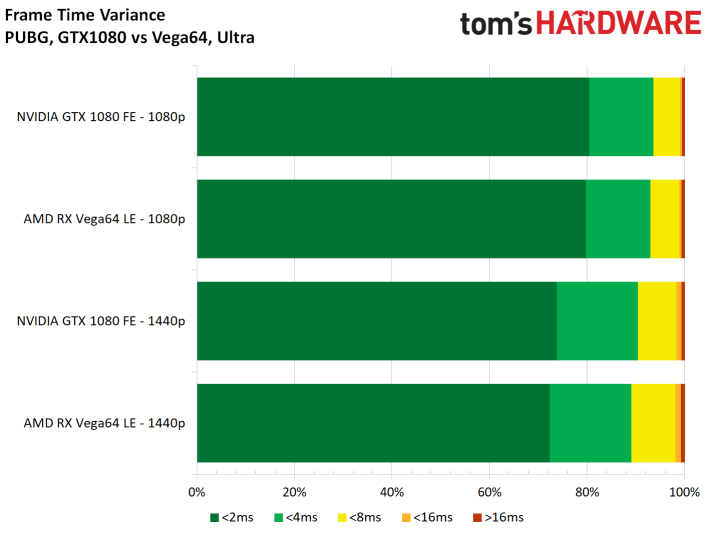
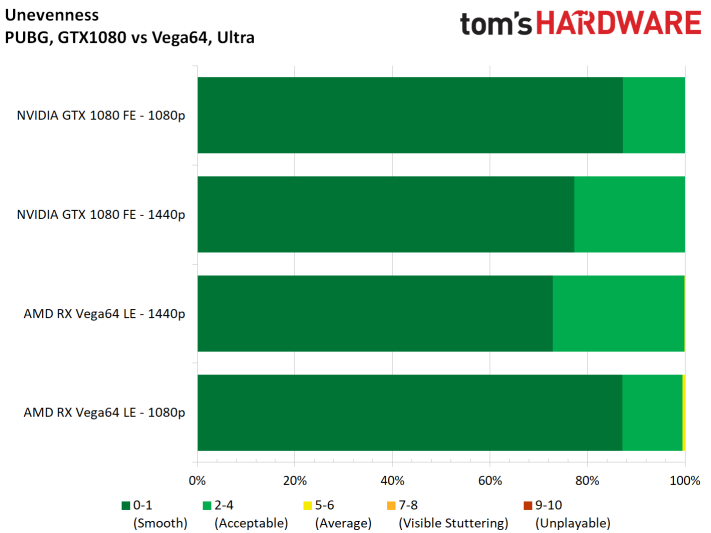
Both cards performed similarly, even if the GeForce GTX 1080 enjoyed a slight lead at 1920x1080. And both averaged more than 90 FPS and never dropped below 60 FPS at that resolution, yielding a smooth experience.
Jumping up to 2560x1440 obviously imposes a performance hit. But the two high-end cards still averaged more than 70 FPS and never dropped below 50 FPS.
CPU Utilization
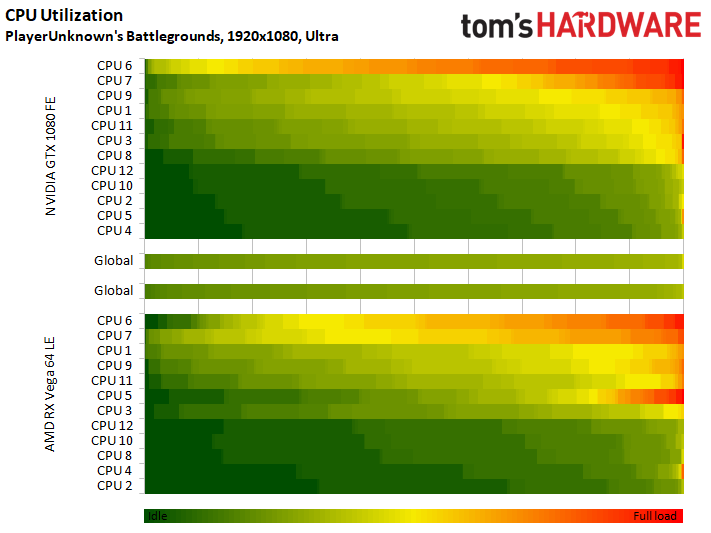
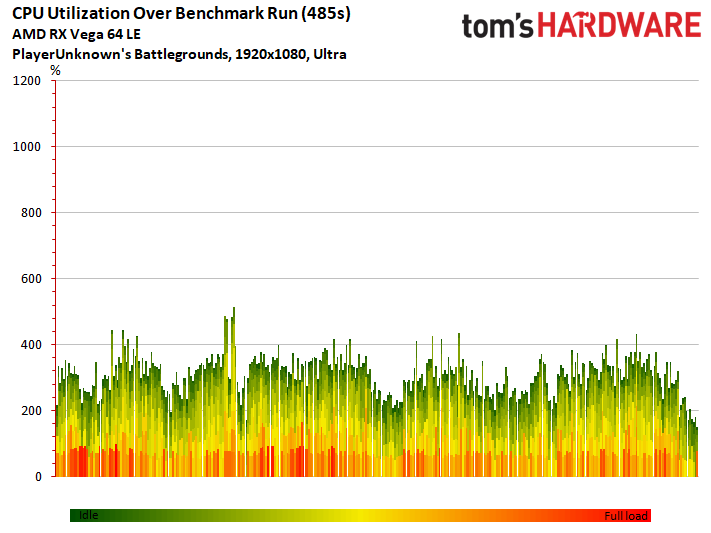
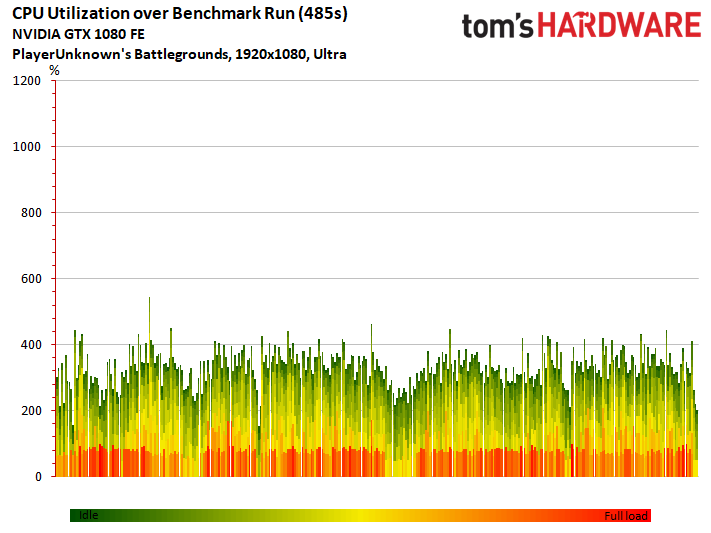
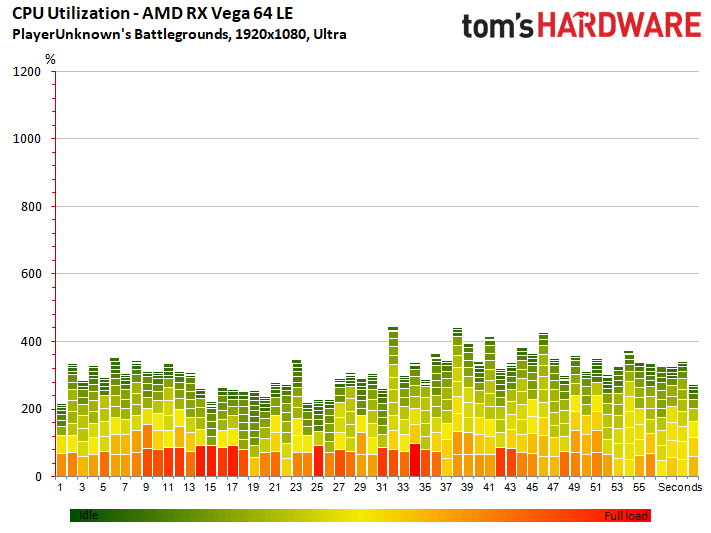
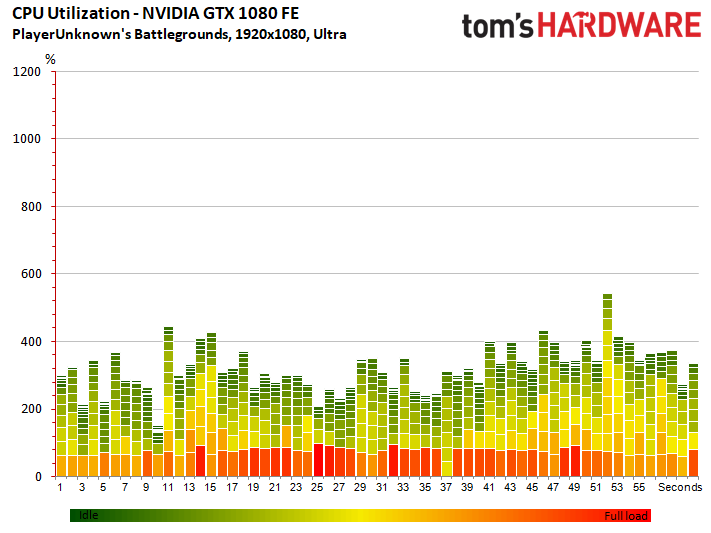
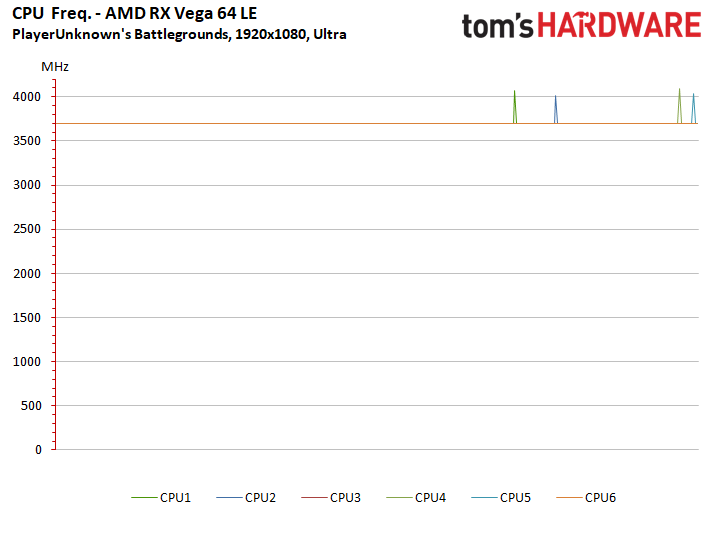
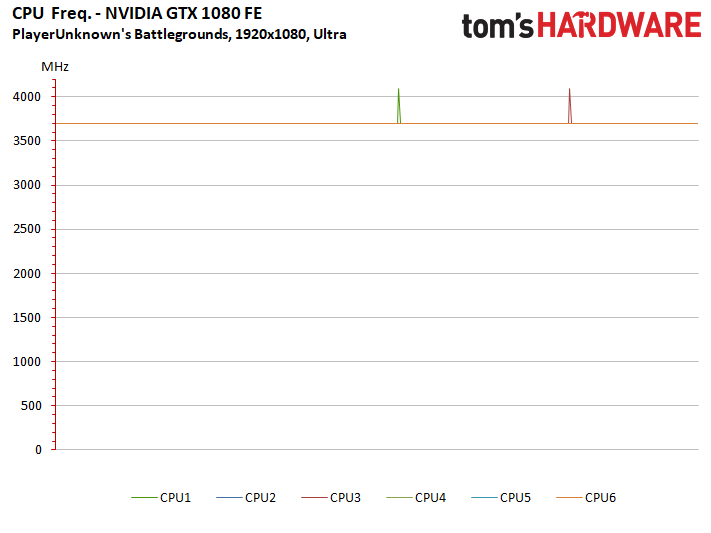
It should come as no surprise that two cards generating more frames through the same benchmark sequence impose higher CPU utilization as well. Once again, we saw three to four cores heavily utilized. More broadly, the Unreal Engine 4 doesn’t seem to use more than seven physical/logical cores.
Finally, the GeForce GTX 1080 causes slightly less host processing utilization compared to AMD's Radeon RX Vega 64 at a similar performance level. This is a DirectX 11-based game after all, and Nvidia is known to enjoy an advantage in that API due to its heavily optimized drivers.
The Bottom Line
Built on an excellent Unreal Engine 4 foundation, PlayerUnknown's Battlegrounds runs well across a wide range of hardware thanks to well-calibrated graphics presets. If you want to play the game at 1920x1080 using PUBG's best-looking detail settings, however, forget lower-end cards like the GeForce GTX 1050 Ti and Radeon RX 560. At a minimum, you want a Radeon RX 570 or GeForce GTX 1060 3GB.
Consider a quad-core CPU mandatory. And although a processor with more cores won't buy you much extra performance, it's always a good idea to pair higher-end graphics cards with more capable CPUs in the interest of maintaining balance. Gaming PCs with 8GB of RAM installed are fine, though it'd be smart to use 16GB in a system with components from the PUBG Corporation's recommended specs.
Get Tom's Hardware's best news and in-depth reviews, straight to your inbox.
Although PUBG launched in early access form in March of 2017, its full release was only a few months ago. The game continues to benefit from regular updates, some of which do affect performance. Let’s hope that a future patch smooths out those frame time variance spikes we observed. Since they seem to affect every graphics card we tested, the issue appears inherent to the game itself, rather than any issue or benefit of one card or chip-maker over the other.
MORE: Get Best Far Cry 5 Performance: 10 Graphics Cards Tested at “Ultra” Quality
MORE: Get Maximum Fortnite Performance: 'Epic' Mode With 10 Graphics Cards
MORE: Final Fantasy XV Performance Review
Current page: Bonus: GeForce GTX 1080 Vs. Radeon RX Vega 64
Prev Page CPU, RAM & VRAM Resources-
beckstrom12 Can you please start including 1440p back into your benchmarks? I think that this resolution, while not the most popular now, will become more and more popular. This will make these articles much more future proof and allow people that have QHD now and in the future view these articles for information.Reply -
mischon123 All cards are 2 or more years old. 1080, 60, 50, 40 is obsolete by any standard. 1080px to 2560px is dead. New merchandise coming out. 4k and 8k is where its at. Not a review or test...TH part of the marketing scheme to sell off old stock.Reply -
Lucky_SLS ^ guess u never read the steam user system survey info published in the first page...Reply
Damn, meant to down vote that. Lel. -
husker No problem with the article if they want to test common cards. The problem is the title. If I click a review of "The Best Possible PUBG Performance", then I kind of expect to see high end video cards, not older, mid-range cards.Reply -
spdragoo Reply20998644 said:Can you please start including 1440p back into your benchmarks? I think that this resolution, while not the most popular now, will become more and more popular. This will make these articles much more future proof and allow people that have QHD now and in the future view these articles for information.
1440p wouldn't have been useful in this situation. Except for the "bonus" GTX 1080 vs. Vega 64 showdown, none of the GPUs tested are "1440p-capable" GPUs. The top-line GPUs they tested were the GTX 1060 & RX 580...both of which barely managed to get past 60FPS@1080p, & had significant differences between their Average & Minimum results. What would have been the point of 1440p testing with these GPUs? "Proving" that their 1440p performance is lacking? "Proving" that PUBG's optimization still lags behind other games?
Even with the GTX 1080 & Vega 64, those 1440p tests aren't exactly impressive. It's more in line with the 1080's performance in Witcher III (https://www.techspot.com/review/1174-nvidia-geforce-gtx-1080/page3.html)...& I think we can all agree that there's no contest as to which game (PUBG or Witcher III) has better graphics... -
The Paladin clean answers though not terribly revealing to many that have the hardware and the game from the start, but in all fairness for all the youngsters out there thinking of building a new rig for gaming PUBG this would be a good read to guide them.Reply
as far a 1440 and 4K gaming, that is upper gamer life, 75% or more "home gamers" who have a mortgage will tell you they have a 1080po monitor on they desk.
-
Lucky_SLS If you guys are considering 2k res for benchmarks, I for one would love to see the 21:9 aspect ratio performance. 2560x1080 for mainstream and 3440x1440 for the top end.Reply
Imagine playing in a monitor like the AOC - C3583FQ. True mainstream gaming monitor. -
alextheblue ReplyOnly three or four cores seem to be used heavily
UE4 shows that it's optimizedfor multi-core CPUs and manages multiple threads well.
Are you contradicting yourself here, or when you say "optimized for multi-core" you actually mean TWO cores with hyperthreading. The game barely taxes the CPU from your own testing. A cheap CFL i3 would probably be overkill.
Meanwhile on the GPU front you can't throw enough graphics resources at the game, seems like they have a lot of headroom for optimization.
-
lucas_7_94 AntiAliasing = High/UltraReply
Post Processing = High/Ultra
Shadows High.
Everything else, very low, and enjoy
